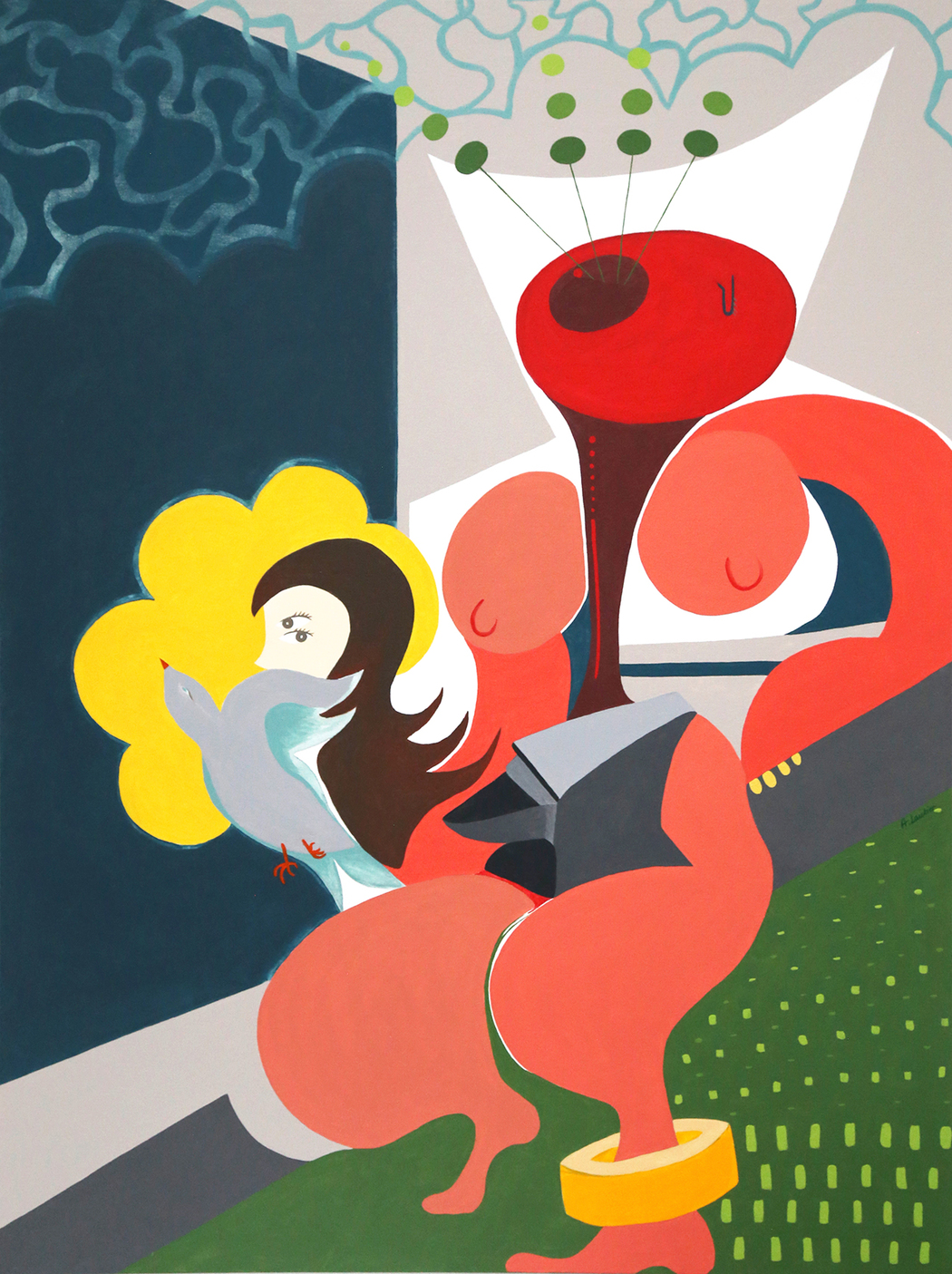Angele Lautier
I am a London-based multidisciplinary artist. I graduated at Camberwell College of Art in Fine Art (Sculpture). I am currently doing a Masters in Fine Art at the Royal College of Art.
Website | Instagram
What inspired you to create the Femella series, and how did the concept of vulnerability as power come into focus for you?
Most of my work is autobiographical. I wanted to create a community of women that depicts a genuine side of what women go through in their various stages of womanhood; adolescence, motherhood, middlescence and invisibility. I draw on my Maltese heritage where the Goddess of Fertility is the most recognised statuette on the Maltese islands. The voluptuous curves are a symbol of fertility, enforcing the idea of childbearing as beautiful and our survival. The characters in the Femella Collection are all naked which makes them vulnerable and powerful at the same time. Furthermore, these paintings measure 120 x 90cm which also makes them powerful.
Could you walk us through your creative process when designing these surreal female portraits?
Each painting is created around a specific issue or theme. Research contributes to a large part of the process. It is imperative for me to be informed on what I am working on; it empowers me and underpins the work more concretely. These paintings take a long time to complete. The concepts starts to form and I ruminate over it for a period of time. In order to achieve the flat blocks of colour, it takes about 5 or 6 coats of paint until I am satisfied with the result. I sketch the ideas on paper but when I upscale it to the canvas, the composition sometimes changes again. It needs to work in the new larger size.
 Angele Lautier, Cathara
Angele Lautier, Cathara
How do the surreal elements in your paintings relate to the real-world themes you explore, such as motherhood, humanity, and migration?
I want my audience to ‘work’ with my art works. Adding surreal elements raises questions. I am very interested in these questions because I also engage in research in social studies; human behaviour and particularly, phenomenology. When I exhibit the work, the viewers’ interpretations of the work are valuable contributions. Motherhood is about relationships with themselves in their new space as a mother, as well as with their new environment in reference to, being uprooted from a working and social environment to a domestic and isolated setting. The latest topic I am researching is migration which similarly deals with change, the journey and resilience. The essence of humanity runs as the common undercurrent feature in both areas. Information about the new body of work that is emerging in relation to migration can be found here on my instagram: @angele_lautier_artist or on my website: www.angelelautier.com.
The Femella collection delves deeply into the complexities of womanhood and motherhood. How have your own experiences shaped the narratives in your art?
All my work is my way of processing issues that are important to me. Being an artist gives me a therapeutic platform to unpack and process narratives. The Femella Collection provides a safe space to shed light on taboo subjects, brings women together to share their experiences and generates conversations that make women realise that they are not alone. I have certainly drawn on my own experiences in Femella, whether they are personal or collective.
 Angele Lautier, Bounteous
Angele Lautier, Bounteous
You mention blending pain and pleasure in your work. How do you balance these emotions visually in your paintings?
The first impression and impact of the bright and bold colourful palette I use, is a joyful and playful one. The flat forms and appealing shapes encourage the viewer to be drawn to a positive energy. By using a surreal approach in the composition, I disrupt the elements which keeps the viewer engaged in an attempt to resolve and understand what the work is about. There is a lot of symbolism and recognisable objects that are not usually put together. The balance is therefore in the composition and the colour palette. I feel it is important to make work that on the surface is joyful and when one sits with it for longer, the pain and pleasure is slowly revealed.
How did 16th-century royal portraits influence your Femella series, and how do you reinterpret their themes for contemporary audiences?
Most of the compositions of 16th century royal portraits centre the female figure, returning our gaze. Some of their costumes alter their physical proportions. For example, the waist is narrowed by the constraint of a corset giving the female torso a triangular shape. A bustle or crinoline exaggerates the pelvic and rear area of the body. Through a study of these garments, I embedded these shapes into the Femella portraits. Cathara was the first portrait painting of the collection. Her long narrow triangular torso was also inspired by the shape of a hunting horn which is hard to blow. She screams from the pit of her stomach.
 Angele Lautier, Bounteous Offspring
Angele Lautier, Bounteous Offspring
Your work often invites viewers to empathize with your subjects. How do you hope your audience will interpret and connect with your art work?
As a multidisciplinary artist, my practice moves across different media and materials, and deals with complex issues which have originated from a lack of empathy. Since my research plays a vitally significant role in my work, the content is rich and therefore makes the work generous to explore and engage with. I am currently working on the theme of migration in which my audience’s empathy is essential. It connects us through a humanitarian lens.


Leave a Reply
You must be logged in to post a comment.